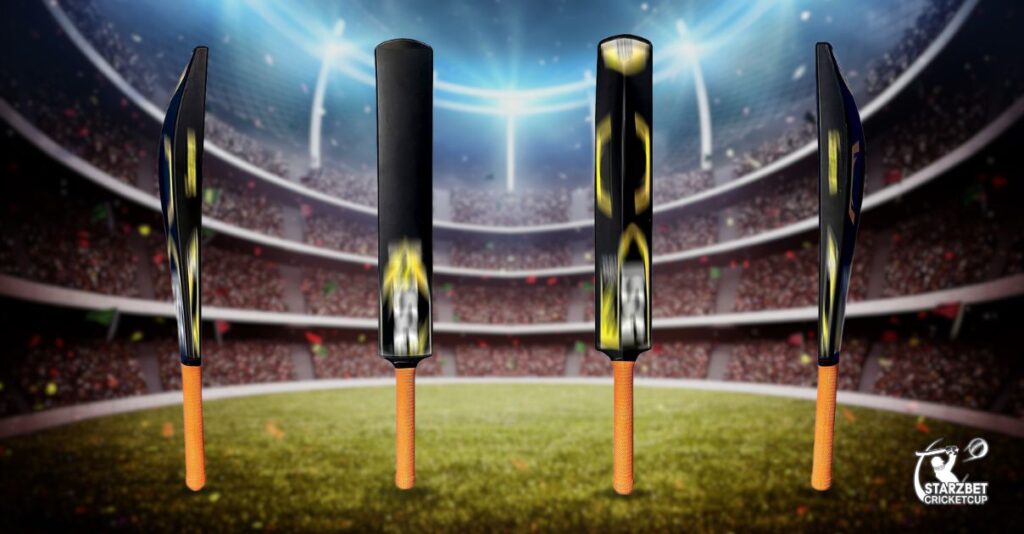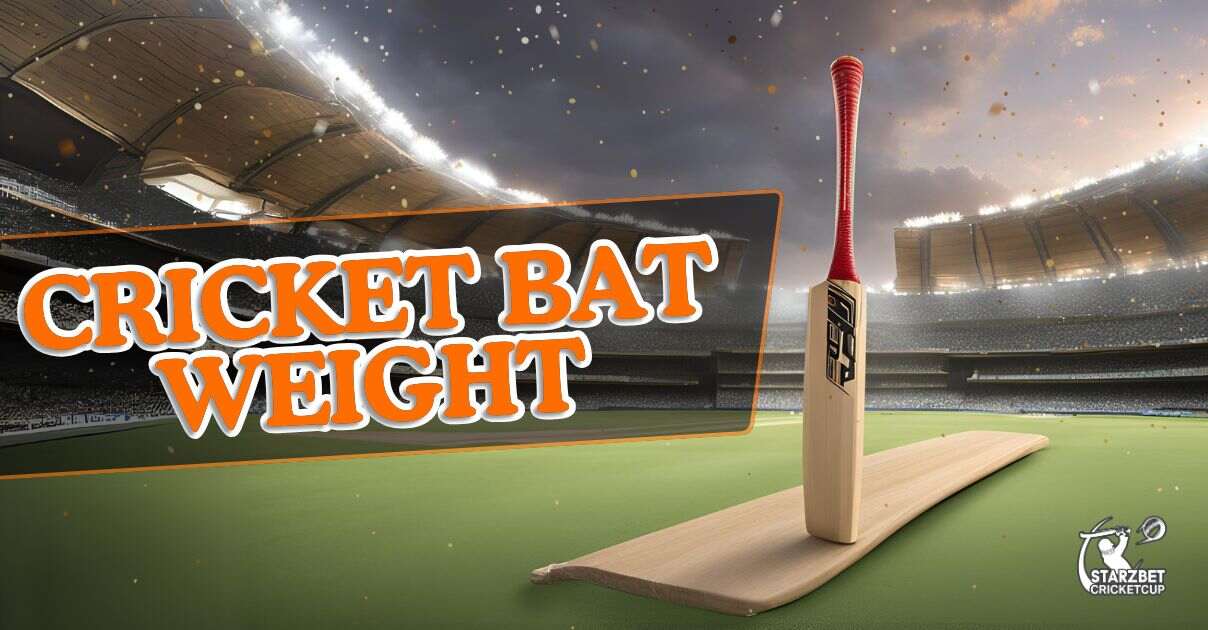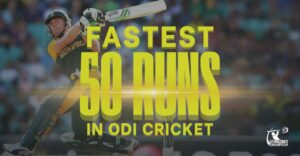The cricket bat weight is arguably the most close-to-heart topic for every batter in the world. As we know, they would be nothing without their willow. We have heard stories of professional cricketers at the top level being very precise with how they want the weight, size and shape of their bat. So why is that?
Cricket bats come in different shapes and weights. Not every batter can pick up any bat and adjust to it. This is why choosing the right willow is important to optimise their performance. From a junior cricketer at a local club to a professional athlete at a higher level, every batter needs the right willow.
The ideal cricket bat weight can impact your game significantly. There are several factors that determine the ideal bat weight for cricket players. Some of those include the batter’s playing style, physical strength, and personal preference.
Here, we will give you a complete guide about the cricket willow and various aspects related to it.
How Does Cricket Bat Weight Matter?
Every batter has a certain comfort level when they hold a willow in their hands. That feeling is what a cricket bat pick-up means. A bat that feels balanced and easy to manoeuvre is believed to have a ‘good pick-up.’ This is largely because of how the weight is distributed across the blade.
Willows with a higher sweet spot can feel lighter because the majority of the wood is concentrated towards the top and middle of the blade. Many manufacturers now produce shorter blades with longer handles to improve balance without compromising power.
Another aspect of batting that is highly correlated to the weight of the willow is the bat speed. The higher the bat speed, the farther the ball travels if connected well. Sometimes, the bat speed can even negate the bad timing of a shot.
A lighter cricket blade can offer better control and quicker shot execution. It allows batters to have an easier swing and faster reactions to the ball. However, a lighter weight might compromise the power required to hit big shots, which heavier willows provide.
Even the Richest cricketers of all time will have a willow size that exactly fits them so that they can play well.

What Is the Standard Weight of a Cricket Bat?
As we have discussed, the weight of a cricket bat can vary based on several factors. But if we look at the general scene, there are three primary standard weight groups for bats. These can be seen between 1.1 to 1.4 kg.
Those three sections of the standard weight of a cricket bat in the professional circuit are as follows.
Lightweight Bats
Lightweight bats in cricket are often used because they are easier to hold and help players with quick reflexes make shots. These bats usually weigh between 1.1 to 1.2 kg or 2.4 to 2.6 lbs. They are strongly recommended for players who depend on hand-eye coordination and enjoy playing creative shots like Suryakumar Yadav and AB de Villiers. The lightweight bats are also known to be helpful to counter pitches where there is pronounced movement off the pitch.
Medium-Weight Bats
Most players prefer medium-weight bats as they help make the movement easier while helping with impact and shot-making. These bats are the most balanced bats out of the three sets. They weigh around 1.2 to 1.3 kg or 2.6 to 2.9 lbs.
Heavyweight Bats
The heaviest set of cricket bats weighs about 1.3 to 1.4 kg or 2.9 to 3.1 lbs. These heavyweight bats are more suited for players who are built well. Willows are very good at generating more power into the shots. The effectiveness of these bats is even more noticeable on slower pitches.
Ideal Cricket Bat Weight by Age
The weight of a cricket bat varies with size and the material used in the manufacture of those. Talking about the ideal bat weight recommendations by age, we will have to look at the bat sizes.
Cricket bat weight recommendations by age are a good indicator of which bat you can use. Below is a general guideline for bat weight based on size and which age group they are best suited for:
Size 0
If you pick up a bat for your kid for the first time, you’d probably want to take home a size 0 bat. It is the lightest bat size and is easily usable for small children and random soft play in your backyard. Their weights run between 1 lb 12 oz and 2 lb 2 oz (0.8kg-0.95kg).
Size 1
Children four or five years of age would find bats-sized one fairly appropriate. The weight of these willows would be approximately around 2 lb 3 oz and 2 lb 6 oz (0.99kg-1.08kg).
Size 2
Size 2 willows are made for children in the age bracket of six or seven years as they will now have a better grip on heavier and bigger things. Size 2 willows weigh between 2 lb 7 oz to 2 lb 9 oz (1.15kg-1.23kg). The approximate length of bats in this size range is 27 and 3/4 inches.
Size 3
If you want a bat for an eight- or nine-year-old child with a height of about 4’6″ to 4’9″, Size 3 is perfect. These willows weigh about 2 lb 10 oz and 2 lb 12 oz (1.19 kg – 1.28 kg).
Size 4
The age group of 9 to 11 years would find size 4 bats just about right. Weighting between 2 lb 13 oz and 2 lb 15 oz (1.28kg-1.33kg), these pieces are about 29 and 3/4 inches.
Size 5
Children in the age group of 10 to 12 years with height in the range of 4’11” to 5’2″ can use the Size 5 bats with ease. These cricket bat weights lie in the range of 2 lb 11 oz to 2 lb 13 oz (1.22kg – 1.28kg).
Size 6
The Size 6 willows are just the right fit for children aged 11 to 13 years and 5’2″ to 5’6″ tall. The usual weight of these willows is 2 lb 12 oz to 2 lb 14 oz (1.25kg – 1.3kg).
Harrow
It is usually suited to a bat of the age of around 12 and 14 years. This bat is of approximately length, that is 32 and 3/4 inches with 2 lb 8 oz and 2 lb 10 oz (1.13kg-1.19kg).
Short Handle
Short-handle bats are for players above the age of 15 years. Their weights range from 2 lb 8 oz to 2 lb 12 oz (1.13kg-1.3kg). Maybe most short-handle bats are found to be used in all professional cricket games. The greatest of all-time cricketers also loves to utilize a short-handle bat.
Long Handle
These bats have a longer reach and weigh between 2 lb 10 oz and 2 lb 14 oz (1.19kg-1.3kg). Long handle bats are ideal for adults taller than 6’2″.
Below, we have provided a complete table with all the measurements of a particular set of bats and their recommended age.
| Size of Bat | Bat Weight | Age Group | Height of Batsman | Approx. Length of Bat | Approx. Width of Bat |
| 1 | 0.99-1.08 kg | 4-5 | 4ft 3″ & under | 25 1/4″ | 3 1/2″ |
| 2 | 1.15-1.23 kg | 6-7 | 4ft 3″ – 4ft 6″ | 27 3/4″ | 3 1/2″ |
| 3 | 1.19-1.28 kg | 8-9 | 4ft 6″ – 4ft 9″ | 28 3/4″ | 3 3/4″ |
| 4 | 1.28-1.33 kg | 9-11 | 4ft 9″ – 4ft 11″ | 29 3/4″ | 3 3/4″ |
| 5 | 1.22-1.28 kg | 10-12 | 4ft 11″ – 5ft 2″ | 30 3/4″ | 4″ |
| 6 | 1.25-1.3 kg | 11-13 | 5ft 2″ – 5ft 6″ | 31 3/4″ | 4″ |
| Harrow | 1.13-1.19 kg | 12-14 | 5ft 6″ – 5ft 9″ | 32 3/4″ | 4 1/6″ |
| Short Handle | 1.13-1.3 kg | 15+ | 5ft 9″ – 6ft 2″ | 33 1/2″ | 4 1/4″ |
| Long Handle | 1.19-1.3 kg | 15+ | Over 6ft 2″ | 34 3/8″ | 4 1/4″ |
Difference Between Light and Heavy Cricket Bats
Each batter has his own preference when choosing the ideal willow. Both light and heavy bats have their distinct plus points as well as minus points. A deeper look into the difference between light and heavy cricket bats will provide us with some more clarity.
Lightweight Bats
Lightweight willows typically facilitate easier usage, which is helpful for beginners looking to get into the sport and learn the art.
Advantages of Lightweight Bats:
Light ones are easy to handle, which is why they are ideal for up-and-coming cricketers who want to discover their batting style and develop a technique.
Lightweight willows encourage batters to explore more range in their shotmaking skills, especially in shorter formats. Shots that involve sudden changes in blade movement, like the switch hit or the scoop shot, are very difficult to control with a heavyweight blade. But with lighter willows, finding the right movements is much easier.
With the arrival of a new age of cricket, innovative shotmaking has become part and parcel of the game. It’s easier to develop such shots with lighter willows as they are easier to control and grip. For example, when playing the switch hit, you need a lightning-fast movement of wrists with a change in grip – a fairly difficult move to execute with a heavy blade.
Lightweight willows can help batters take minimum load on their wrists, leading to fewer injury scares and increasing the longevity of a cricketer.
Disadvantages of Lightweight Bats:
The major downside of using lightweight willows is that batters need to exert massive muscular strength to generate power in their shots and clear the boundaries, especially on bigger grounds.
While lightweight blades can give the batters more degrees of freedom to swing their willows, heavier ones often come in handy to help them hit the big sixes in the endovers of the shorter formats.
Heavyweight Bats
Heavyweight willows aid shot-making and usually help to hit the ball a long way for experienced players or heavy players who don’t mind the weight.
Advantages of Heavyweight Bats:
Heavy bats are preferable to batters who have a lot of muscle strength and can carry them easily. The power on a shot generated on a heavy willow in manifolds is higher than a lighter one. More power on the shot equals more distance and more runs.
The weight of the heavier bats tends to lie on their meaty edges. The heavier the bat, the broader the edges. These broad edges are a big plus in modern-day cricket, as even-edged balls tend to fly out of the ground on the heavier blades. In short, anything over 1.30 kg is the best bat weight for power-hitting in cricket.
Batters who generally play with lighter bats also prefer to switch to heavyweight bats when it comes to the endovers, generating the extra power to send the balls flying into the stands.
Disadvantages of Heavyweight Bats:
Although the heavyweight bats can generate more power, it can be a potential injury hazard to some cricketers, as it greatly strains the wrists and elbow while playing even the routine shots like pulls and cuts.
With heavy bats, the range of playing shots also gets very single-dimensional, as it becomes challenging for the batters to lift the heavy bat and play shots behind the square of the wicket.
Cricketers and Their Bat Weight
If you haven’t wondered about the willow weights of some of our favourite cricketers, you’re probably lying. Over the years, we’ve heard that Sachin Tendulkar and MS Dhoni used heavy blades or that Kane Williamson prefers a lighter one. But what about the exact weights of those willows? Eventually, we got the answers to some of those questions.
The heaviest willow ever used in cricket belonged to former South African player Lance Klusener. The all-rounder batted with a blade that weighed an astonishing 1.53 kg.
Tendulkar, one of the greatest batters in cricket history, had a well-known affinity for his cricketing tools. He meticulously chose specific willow weights for particular conditions and took great care of them. The Indian legend played with a 1.47 kg blade.
MS Dhoni, famous for his sheer power, also used heavy willows during his prime, with weights similar to Tendulkar’s. Chris Gayle, a nightmare for bowlers, wielded blades weighing around 1.36 kg.
New Zealand’s Kane Williamson grew up in conditions where the ball swung and seemed a lot. This, along with his physical build, led him to prefer lighter willows. At 1.12 kg, Williamson’s blade is perhaps the lightest among renowned cricketers.
AB de Villiers, Virat Kohli, and David Warner, on the other hand, used more standard willow weights, ranging between 1.19 kg and 1.22 kg.
Conclusion
We have gone over almost every aspect that is key in choosing the right cricket bat weight for yourself. Some like heavy bats, others prefer lighter ones. Hence giving an outright conclusion to this question is not fair.
From an ideal point of view, if you are starting your cricketing journey at a professional level, you should try out lightweight and medium-weight bats. Trying out several willows would help you understand what suits your playing style.





